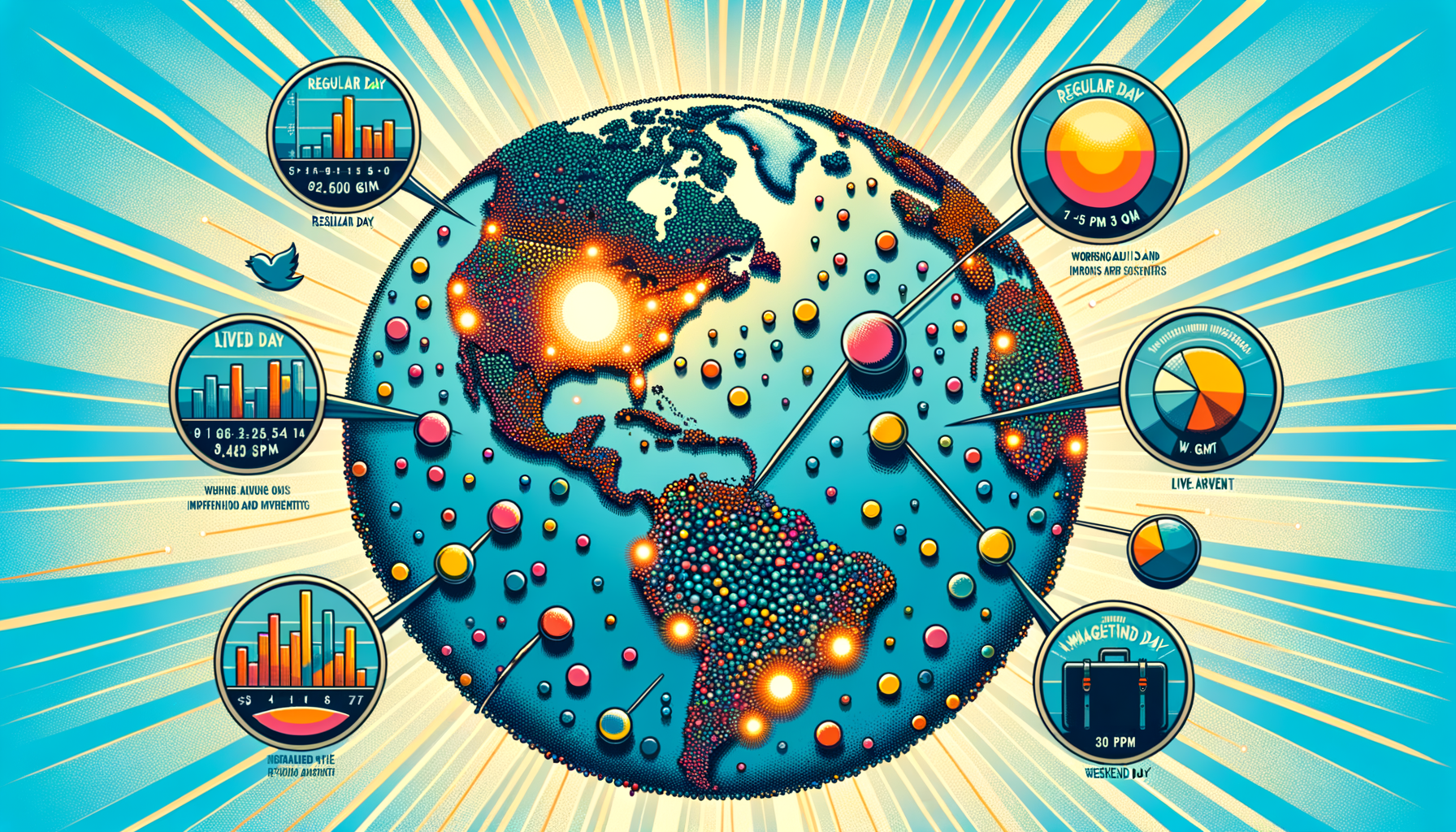“Unveiling the Optimal Tweeting Times: A Comprehensive Guide on Peak Twitter Hours for Maximum Engagement”

As social media continues to revolutionize communication, businesses are learning to adapt and get the best out of these platforms. Twitter, with its substantial user base and real-time news broadcasting, has become an indispensable marketing tool for businesses small and large. However, the question often arises, when is the best moment to post on Twitter to achieve optimal outreach and engagement? This query is not unaddressed. Volumes of research have been conducted into understanding the dynamics of user interaction on Twitter and determining the best time to post. This lengthy discussion delves into this topic in-depth, analyzing research findings and providing relevant information for businesses who aim to make the best out of their Twitter marketing strategies.
Diving straight into the matter, let’s look at a global overview. Worldwide data encapsulates the diversity of people using Twitter, taking into account different time zones, routines, work schedules, and so on. According to widespread analyses, the most optimal timing to post on Twitter globally seems to be between Monday and Thursday, specifically from 9 am to 3 pm GMT. During these hours, Twitter sees high volumes of user activity, which increases the chances of your post reaching a wider audience.
Several factors can influence these peak Twitter times, a prominent one being the region or country of interest. For instance, in the United States, the highest engagement rates occur between Monday and Thursday, from 9 am to 3 pm Eastern Standard Time (EST). Similarly, different peak times apply to vary regions like Asia, Europe, Africa, and Australia, depending on the respective time zones and user behavior.
A unique aspect of Twitter is its live, real-time broadcasting nature. It serves as a platform for immediate news and conversations, unlike other social media platforms with a more laid-back, asynchronous format. This feature profoundly affects the best times to post, as engagement rates could vary rapidly through the day. For example, during particular live events such as sports games, political debates, celebrity talks, etc., Twitter users tend to be more active, leading to enormous spikes in engagement rates. Integrating these occasions into your Twitter marketing strategy could yield notable results.
Moving on, consider the demographics of the Twitter audience that your posts are intended for. For a business targeting working adults, the best times to post could be around lunch hours or after typical work hours when these individuals are likely to be checking their phones. However, if your post aims for the student population, late-night timings could produce higher engagement, as many studies suggest that students prefer using social media during late hours after finishing their work. Catering to the typical routines and lifestyle of your target audience can enhance the reach and engagement of your posts significantly.
Here it’s important to note that Twitter engagement and impressions don’t necessarily mirror each other. In simpler terms, a high engagement rate (likes, retweets, replies) doesn’t automatically mean your tweet is reaching a broader audience (impressions). For instance, if your tweet is posted at peak engagement time, it is likely to get more likes and retweets. However, because numerous others are also posting in this peak period, your tweet could be quickly buried in the users’ feeds, limiting its overall reach. The dynamics of Twitter engagement and impressions are variable and need to be tailored to your specific business goals.
Now, let’s focus on some general tips that could optimize your Twitter marketing plan. First and foremost, avoid scheduling important tweets on weekends, especially on Sundays. Studies consistently show that both engagement rates and impressions tend to diminish over the weekend. Secondly, the frequency of your posts is also critical. Twitter posts have a shorter lifespan than posts on other social platforms; hence multiple posts per day could be beneficial. However, do not compromise the quality of your content for quantity.
Additionally, experimenting with your posting schedule can provide useful insights for your business. Different brands have varying target audiences, each with distinct behaviors and preferences. Therefore, testing out different timings and measuring their effect on engagement could help tailor the best posting schedule for your brand.
Finally, using Twitter’s built-in analytics could be beneficial in understanding the response to your posts. This tool provides insights on tweet impressions, engagements, and audience demographics, which could guide the refinement of your Twitter marketing strategies.
In conclusion, the ‘best time to tweet’ isn’t a one-size-fits-all solution. Varying factors such as user behavior, geographic differences, the real-time nature of Twitter, audience demographics, etc., all impact what would be the best posting schedule for your brand. The key is understanding the dynamics of these factors and flexibly adjusting your Twitter marketing plan to optimize reach and engagement. Experimentation, measurement, and refinement are crucial in this process. As long as businesses keep adapting to these ever-evolving dynamics, Twitter can certainly be an invaluable tool for their marketing arsenal.

Recent Comments